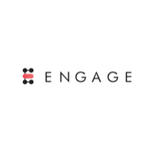Description

DesktopReady

LogMeIn
Comprehensive Overview: DesktopReady vs LogMeIn
DesktopReady:
a) Primary Functions and Target Markets:
Primary Functions: DesktopReady is a cloud-based desktop-as-a-service (DaaS) solution. Its primary purpose is to provide users with fully functional Windows desktops that are accessible from anywhere with an internet connection. This service includes features like software provisioning, automatic updates, security management, and 24/7 support.
Target Markets: DesktopReady primarily targets small to medium-sized businesses (SMBs), enterprises, and Managed Service Providers (MSPs) looking to streamline IT operations and reduce costs associated with maintaining physical infrastructure. It is particularly beneficial for organizations with remote workforces or those experiencing rapid growth and needing scalable solutions.
b) Market Share and User Base:
DesktopReady operates in the DaaS market, which is growing with the trend towards remote and hybrid work environments. Although specific market share and user base figures for DesktopReady are not publicly detailed, it contends with other key players in the DaaS space like Microsoft Azure Virtual Desktop, Amazon WorkSpaces, and VMware Horizon Cloud. DesktopReady's integration with Microsoft technologies makes it a suitable choice for organizations already invested in the Microsoft ecosystem.
LogMeIn (Now Known as GoTo):
a) Primary Functions and Target Markets:
Primary Functions: LogMeIn, rebranded as "GoTo," provides remote access and support services. Its services include remote desktop access, unified communications, video conferencing, and identity management. GoTo Connect and GoTo Meeting are part of its portfolio, addressing communication and collaboration needs.
Target Markets: GoTo targets a broad range of industries, including IT, healthcare, education, and finance. Its solutions cater to both small businesses and enterprises needing reliable remote access and communication platforms for distributed teams.
b) Market Share and User Base:
GoTo (formerly LogMeIn) has a significant presence in the remote access and unified communication sectors. It commands a substantial market share due to its origin in remote access and its expanded suite of offerings. The user base includes millions of users globally, leveraging both its remote support tools and communication solutions.
c) Key Differentiating Factors:
-
Service Offerings:
- DesktopReady: Focuses on delivering a full virtual desktop experience, equipped for firms seeking to manage their IT environments in the cloud efficiently. It shines in providing a robust Windows experience tailored for flexibility, particularly suited for Windows-heavy workflows.
- GoTo/LogMeIn: Offers a broader range of services beyond just desktop management, including strong remote access tools. It's more versatile in the area of communications and support, which is ideal for businesses looking for integrated conferencing and support solutions.
-
Target Audience:
- DesktopReady: Targets companies wishing to eliminate the need for on-premises desktop environments, appealing to sectors with high compliance and security needs.
- GoTo/LogMeIn: Appeals to organizations with a need for seamless remote access and comprehensive communication tools, supporting diverse industries with emphasis on reliable connectivity.
-
Technological Ecosystem:
- DesktopReady: Heavily integrated with Microsoft Azure, benefitting businesses invested in the Microsoft ecosystem looking to leverage Windows-based environments.
- GoTo/LogMeIn: Known for easy integrations across multiple platforms and tools, with a strong emphasis on remote connectivity and collaborative features enhanced during recent remote work shifts.
-
Scalability and Flexibility:
- DesktopReady: Provides high scalability for desktop solutions, beneficial for rapidly growing businesses requiring more virtual desktops.
- GoTo/LogMeIn: Offers flexible communication and remote control solutions that are easily scalable in response to changing organizational requirements.
These distinctions frame DesktopReady and GoTo/LogMeIn as solutions that, while overlapping in some respects, cater to different aspects of managing remote and distributed IT environments.
Contact Info

Year founded :
Not Available
Not Available
Not Available
Not Available
Not Available

Year founded :
2003
+1 805-690-6400
Not Available
United States
http://www.linkedin.com/company/logmein
Feature Similarity Breakdown: DesktopReady, LogMeIn
DesktopReady and LogMeIn are both remote desktop solutions, but they cater to different user needs and offer distinctive features. Here's a breakdown of their similarities and differences:
a) Core Features in Common:
- Remote Access: Both allow users to access their desktop environments from remote locations securely.
- Cross-Platform Compatibility: They offer support for various operating systems, enabling remote access from different devices, such as Windows, macOS, iOS, and Android.
- Security: Each provides robust security features, including encryption, multi-factor authentication (MFA), and secure connection protocols, to protect user data during remote sessions.
- Scalability: Both platforms are designed to support varying scales, from individual users to enterprise-level deployments.
- File Transfer: They enable file transfer between the remote and local systems seamlessly.
- Session Management: Users can manage and monitor active sessions, with options to log out or terminate sessions remotely.
b) User Interface Comparison:
-
DesktopReady: Typically, DesktopReady offers a cloud-based virtual desktop infrastructure (VDI) interface, which resembles a standard desktop environment but is fully hosted in the cloud. It focuses on simplicity, providing straightforward access to virtual desktops with a familiar Windows-like environment.
-
LogMeIn: The interface focuses more on remote control and management, often presented with a dashboard that provides quick access to connected devices, session statistics, and security settings. LogMeIn's interface is generally user-friendly, with intuitive navigation, making it easy for users to connect to remote systems.
c) Unique Features:
-
DesktopReady:
- Cloud-Native Design: Being a Desktop as a Service (DaaS) solution, DesktopReady is cloud-native, focusing extensively on providing cloud-based Windows desktops.
- Integration with Microsoft 365: Offers seamless integration with Microsoft 365, optimizing productivity for businesses already using Microsoft services.
- Managed IT Services: Provides businesses with end-to-end managed services, meaning less burden on IT teams as updates and maintenance are handled by DesktopReady.
- Customization for Business Needs: DesktopReady offers more flexibility in terms of customizing desktops to fit specific business requirements.
-
LogMeIn:
- Remote Support Functionality: LogMeIn is equipped with features tailored for IT support, including real-time chat, diagnostic tools, and the ability to control multiple monitors.
- Consumer-Friendly Plans: Offers options more suited for individual and household use as well, not just businesses.
- Resource Management Tools: Includes features to monitor and track system resources and performance, helpful for IT administrators.
- Integration with Collaboration Tools: LogMeIn has features that integrate well with their other products, such as GoToMeeting, enhancing remote collaboration.
Both solutions provide strong remote access capabilities, but the choice between them generally depends on whether the user is more focused on cloud-based desktop delivery (DesktopReady) or comprehensive remote management and support features (LogMeIn).
Features

Not Available

Not Available
Best Fit Use Cases: DesktopReady, LogMeIn
DesktopReady
a) Best Fit Use Cases for DesktopReady
Types of Businesses or Projects:
-
Small to Medium-Sized Businesses (SMBs): DesktopReady is particularly well-suited for SMBs that require cost-effective and manageable virtual desktop infrastructure (VDI) solutions without the complexity of traditional VDI setups.
-
Startups: Startups looking to scale their IT infrastructure quickly can benefit from DesktopReady’s flexibility and ease of deployment, allowing teams to access virtual desktops from anywhere.
-
Remote Work and Hybrid Models: Companies implementing remote work policies will find DesktopReady beneficial due to its secure and manageable VDI, supporting employees who need access to office resources remotely.
-
Businesses with IT Constraints: Companies with limited IT resources or technical expertise can leverage DesktopReady’s managed services to reduce the burden of IT maintenance and security updates.
-
Industries with Heavy Compliance Requirements: Sectors such as healthcare and finance, where data security and compliance are critical, can utilize DesktopReady to ensure regulatory requirements are met with virtual desktops that offer robust security features.
LogMeIn
b) Preferred Scenarios for LogMeIn
Scenarios:
-
Quick and Reliable Remote Access: Businesses that require quick and reliable access to on-premises computers and servers will find LogMeIn an excellent choice due to its robust remote connectivity features.
-
IT Support and Helpdesk Functions: IT departments and Managed Service Providers (MSPs) can use LogMeIn for remote troubleshooting and support, reducing the need for on-site visits.
-
Collaboration Needs: LogMeIn offers solutions like GoToMeeting and GoToConnect, catering to businesses that need effective tools for online meetings and team collaboration.
-
Cross-Platform Access: LogMeIn provides consistent remote access across platforms, making it ideal for environments with diverse operating systems and device types.
-
Secure File Sharing and Management: Companies that need secure and efficient ways to share files, manage documents, and collaborate in real time will find LogMeIn’s portfolio useful.
d) Catering to Different Industry Verticals or Company Sizes
DesktopReady:
- Industry Verticals: Best suited for industries like finance, healthcare, education, and legal sectors that require robust security and compliance with industry standards.
- Company Sizes: Primarily targets small to medium-sized businesses and growing enterprises due to its scalability, cost-effectiveness, and ease of deployment.
LogMeIn:
- Industry Verticals: Serves a broad range of industries including IT services, customer support, professional services, and creative industries where remote access and collaboration tools are in demand.
- Company Sizes: Suitable for businesses of all sizes, from SMBs to large enterprises, due to its extensive suite of products that cater to various operational needs, including remote support, collaboration, and remote work solutions.
Pricing

Pricing Not Available

Pricing Not Available
Metrics History
Metrics History
Comparing teamSize across companies
Conclusion & Final Verdict: DesktopReady vs LogMeIn
To provide a comprehensive conclusion and final verdict for DesktopReady and LogMeIn, let's analyze each aspect outlined:
a) Which Product Offers the Best Overall Value?
Determining the best overall value between DesktopReady and LogMeIn depends on the specific needs and priorities of a business or individual. DesktopReady primarily focuses on offering a complete virtual desktop solution, which can be beneficial for businesses looking to simplify desktop management and ensure a consistent user experience across devices. LogMeIn, on the other hand, is known for its remote access capabilities and has a broader suite of products suited for collaboration and remote work management.
Verdict:
- If your primary need is a virtual desktop infrastructure (VDI) for consistent workspace management, DesktopReady might provide better value due to its specialized focus.
- For businesses that require simple remote access solutions and are interested in other collaboration tools, LogMeIn might offer better value considering its versatility and range of services.
b) Pros and Cons of Each Product
DesktopReady:
Pros:
- Specialized in VDI, providing a complete virtual desktop environment tailored for businesses.
- Simplifies IT management by offering a consistent desktop experience across devices.
- Can improve security through centralized management and updates.
Cons:
- May have a higher cost for businesses that don't necessarily need full desktop virtualization.
- Limited if the business requires broader functionalities beyond desktop virtualization like remote support or collaboration tools.
LogMeIn:
Pros:
- Offers a variety of products including remote access, support, and collaboration tools.
- User-friendly interface known for reliable remote access capabilities.
- Versatile and scalable for different types of businesses and remote work needs.
Cons:
- Services can become costly as needs scale or if multiple services are bundled.
- Primarily known for remote access; may not offer as deep functionality in specialized areas like VDI compared to DesktopReady.
c) Specific Recommendations
For users deciding between DesktopReady and LogMeIn, the recommendation would be to carefully assess current and future business needs:
-
Choose DesktopReady if you require robust virtual desktop infrastructure, especially if consistency and desktop management are critical. It suits businesses in regulated industries that need secure and compliant desktop management.
-
Choose LogMeIn if your primary need is reliable remote access and if you're interested in an integrated suite of tools supporting remote work like collaboration and support. It’s advantageous for businesses where flexibility and scalability are more critical than specialized desktop management.
In conclusion, each product has unique strengths and potential trade-offs. Businesses should prioritize their specific needs, budget constraints, and long-term IT strategy when making a decision between DesktopReady and LogMeIn.
Add to compare
Add similar companies



